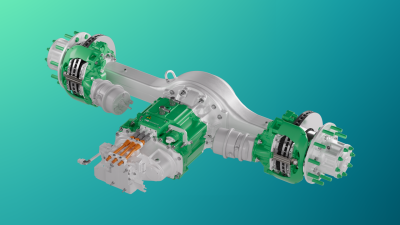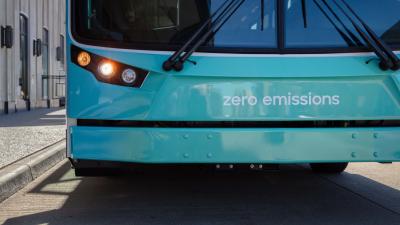Electric Mini Excavators and Their Role in the Future of Decarbonized Construction
The construction industry has more than 733,000 employers and over 7 million employees. It is a top contributor to the U.S. economy, generating nearly $1.4 trillion worth of structures each year. And according to the United Nations Environment Program, buildings and their construction together account for more than 35% of global energy use and nearly 40% of energy-related carbon dioxide emissions annually.
As the world is faced with the climate crisis, the construction industry must find ways to adopt greener energy solutions. It is a critical challenge to ensure the momentum of transformation for lowering construction emissions does not slow.
Why are mini excavators a good candidate for electrification?
Zero-emissions at point-of-use
As stricter standards for zero-emissions continue to arise, even off-highway applications have begun to feel the push to lower their CO2 emissions. Urban cities have started to implement zero-emission zones (ZEZ) that require any vehicle, on- or off-highway, to comply with the area's regulations. For this reason, construction zones in urban cities have sought out electrified products, such as electric excavators, that match or exceed the reliability and performance of their diesel counterparts. These electric excavators are now considered invaluable for indoor construction sites, where the diesel counterparts were unable to function due to the fumes, they emitted and poor ventilation.
Reduced noise pollution
As more cities implement ZEZs, there has been a noticeable decrease in noise pollution. What was once a loud machine that caused a disturbing ruckus when turned on, is now just as quiet when operating as it would be when turned off. A reduction in noise pollution is not only satisfying to the construction site’s surrounding areas, but in many ways decreasing environmental noise could have positive effects on passerby health. Regardless of noise, construction companies want assurance that these electrified excavators can get the job done.
An additional advantage of reducing noise pollution is improved communication between the operator of the excavator and other workers on-site. By removing the engine-induced vibrations, both the operator and the workers guiding the operator can better hear one another.
Interoperability
Operators have noted that there is no difference in machine interoperability between electric and diesel counterparts. The performance of an electric excavator easily matched the performance of diesel vehicles. Its motor’s response to fluctuations in load is faster due to the connectivity speed between the electric module and battery, allowing for better operating performance and feel.
Decreased maintenance
Because electric excavators no long run-on traditional fuel, the need for coolants and oil filters is eliminated and significantly decreases the maintenance intervals. The vehicles also have a lower number of parts that need to be maintained, which can potentially result in in the total cost of ownership to be more affordable than their diesel counterparts.
What are some of the challenges that electric excavators still face today?
Battery packaging requirements
Packaging has always been a dilemma in the electrification space as these machines were optimized for a diesel engine, not batteries. While batteries are less energy dense than traditional fuel, they require additional components that a diesel engine and fuel cell do not, such as a thermal management system. So, the most prominent question engineers are working to answer is, how do you pack a battery with enough energy and all its components into an existing diesel machine?
Cooling and heating management
Being enclosed in such tight spaces and exposed to all types of weather, excavators need to perform under all kinds of temperatures. However, due to the machine's compactness, adding a component for cooling is not always possible. From a heating standpoint, the battery cannot operate if it's below 0 degrees Celsius due to its chemistry.

